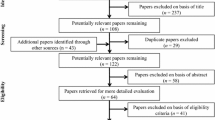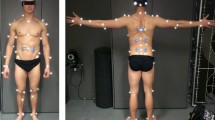Abstract
Objective
This study was performed to investigate the differences in body pressure-related sensory changes between males and females in a side-lying position for physiotherapy research.
Methods
To analyze body pressure, the Body Pressure Measurement System was used. Body pressure sensors were attached to mattresses beneath the subjects. The level of pain was evaluated using pain score tools before the side-lying position was adopted, as well as at 1, 5, 10, and 15 min after adoption of the side-lying position. Total pain level was also evaluated for specific body points.
Results
In analysis of total pain score, the shoulder and pelvis scored significantly higher than other body parts. And, in the gender comparison, the arm showed a significant difference in pain level. Furthermore, this result showed the temporal change in total pain score after maintaining the side-lying position for each body part. Overall, the pain scores increased at 1 minute spent in the side-lying position for every body part except the head.
Conclusion
These results suggest that postural changes and properties that change in a time-dependent manner need to be carefully considered when applying physiotherapy in the side-lying position.
Similar content being viewed by others
References
Page, M. J. et al. Electrotherapy modalities for rotator cuff disease. Cochrane Database Syst. Rev. 6, doi: 10.1002/14651858.CD012225 (2016).
Cheing, G. L., Tsui, A. Y., Lo, S. K. & Hui-Chan, C. W. Optimal stimulation duration of tens in the management of osteoarthritic knee pain. J. Rehabil. Med. 35, 62–68 (2003).
Lee, W.-D., Lee, J.-U., Park, J. & Kim, J. Analysis of the body pressure-related sensory changes in the static supine position for healthy science research: a randomized controlled pilot trial. Toxicol. Environ. Health Sci. 7, 211–216 (2015).
Lee, W. D., Park, J. & Kim, J. Differences in sensory changes between the floor and mattress in the static prone position for healthy science research. Toxicol. Environ. Health Sci. 9, 130–134 (2017).
Schneidert, M., Hurst, R., Miller, J. & Ustün, B. The role of environment in the International Classification of Functioning, Disability and Health (ICF). Disabil. Rehabil. 25, 588–595 (2003).
Scott, R. G. & Thurman, K. M. Visual feedback of continuous bedside pressure mapping to optimize effective patient repositioning. Adv. Wound Care (New Rochelle) 3, 376–382 (2014).
López-Torres, M., Porcar, R., Solaz, J. & Romero, T. Objective firmness, average pressure and subjective perception in mattresses for the elderly. Appl. Ergon. 39, 123–130 (2008).
Fillingim, R. B., King, C. D., Ribeiro-Dasilva, M. C., Rahim-Williams, B. & Riley, J. L. 3rd. Sex, gender, and pain: a review of recent clinical and experimental findings. J. Pain 10, 447–485 (2009).
Bernardes, S. F., Keogh, E. & Lima, M. L. Bridging the gap between pain and gender research: a selective literature review. Eur. J. Pain 12, 427–440 (2008).
Hurley, R. W. & Adams, M. C. Sex, gender, and pain: an overview of a complex field. Anesth. Analg. 107, 309–317 (2008).
Mogil, J. S. Sex differences in pain and pain inhibition: multiple explanations of a controversial phenomenon. Nat. Rev. Neurosci. 13, 859–866 (2012).
Racine, M. et al. A systematic literature review of 10 years of research on sex/gender and experimental pain perception -part 1: are there really differences between women and men? Pain 153, 602–618 (2012).
Racine, M. et al. A systematic literature review of 10 years of research on sex/gender and pain perception -part 2: do biopsychosocial factors alter pain sensitivity differently in women and men? Pain 153, 619–635 (2012).
Asayama, I., Chamnongkich, S., Simpson, K. J., Kinsey, T. L. & Mahoney, O. M. Reconstructed hip joint position and abductor muscle strength after total hip arthroplasty. J. Arthroplasty 20, 414–420 (2005).
Scott, E. M. et al. Measurement of interface pressures in the evaluation of operating theatre mattresses. J. Wound Care 8, 437–441 (1999).
Normand, M. C. et al. Biomechanical effects of a lumbar support in a mattress. J. Can. Chiropr. Assoc. 49, 96–101 (2005).
Tyler, T. F., Roy, T., Nicholas, S. J. & Gleim, G. W. Reliability and validity of a new method of measuring posterior shoulder tightness. J. Orthop. Sports Phys. Ther. 29, 262–269 (1999).
Lunden, J. B., Muffenbier, M., Giveans, M. R. & Cieminski, C. J. Reliability of shoulder internal rotation passive range of motion measurements in the supine versus sidelying position. J. Orthop. Sports Phys. Ther. 40, 589–594 (2010).
Samuelsson, L. & Lundin, A. Thermal quantitative sensory testing in lumbar disc herniation. Eur. Spine J. 11, 71–75 (2002).
Zub, L. W., Szymczyk, M., Pokryszko-Dragan, A. & Bilinska, M. Evaluation of pain in patients with lumbar disc surgery using VAS scale and quantitative sensory testing. Adv. Clin. Exp. Med. 22, 411–419 (2013).
Freynhagen, R. et al. Pseudoradicular and radicular low-back pain -a disease continuum rather than different entities? Answers from quantitative sensory testing. Pain 135, 65–74 (2008).
Angeli, C. A., Edgerton, V. R., Gerasimenko, Y. P. & Harkema, S. J. Altering spinal cord excitability enables voluntary movements after chronic complete paralysis in humans. Brain 137, 1394–1409 (2014).
Crone, C. & Nielsen, J. Spinal mechanisms in man contributing to reciprocal inhibition during voluntary dorsiflexion of the foot. J. Physiol. 416, 255–272 (1989).
Eyre, J. A., Miller, S., Clowry, G. J., Conway, E. A. & Watts, C. Functional corticospinal projections are established prenatally in the human foetus permitting involvement in the development of spinal motor centres. Brain 123, 51–64 (2000).
Heo, J. et al. Serum heavy metals and lung function in a chronic obstructive pulmonary disease cohort. Toxicol. Environ. Health Sci. 9, 30–35 (2017).
Rim, K. T. Toxicological evaluation of MSG for the manufacturing workers’ health: A literature review. Toxicol. Environ. Health Sci. 9, 1–11 (2017).
Choi, B.-R., Kim, J.-H. & Kim, J. A pilot study on the effect of pelvic exercise on standing balance in patients with incomplete cervical spinal cord injury. Int. J. Clin. Med. 4, 123–132 (2013).
Yang, S.-M., Lee, W.-D., Kim, J.-H., Kim, M.-Y. & Kim, J. Differences in body components and electrical characteristics between youth soccer players and non-athletes. Health 5, 1010–1015 (2013).
Lee, L. K. et al. A review of cardiovascular disease in Korean shift workers and the approach to improve their health at Y power plant. Trans. Rev. 25, 4357–4363 (2017).
Author information
Authors and Affiliations
Corresponding author
Rights and permissions
About this article
Cite this article
Lee, WD., Yang, SM., Park, J. et al. Differences in Sensory Changes between Males and Females in the Side-lying Position for Healthy Science Research. Toxicol. Environ. Health Sci. 10, 26–30 (2018). https://doi.org/10.1007/s13530-018-0343-7
Received:
Revised:
Accepted:
Published:
Issue Date:
DOI: https://doi.org/10.1007/s13530-018-0343-7




